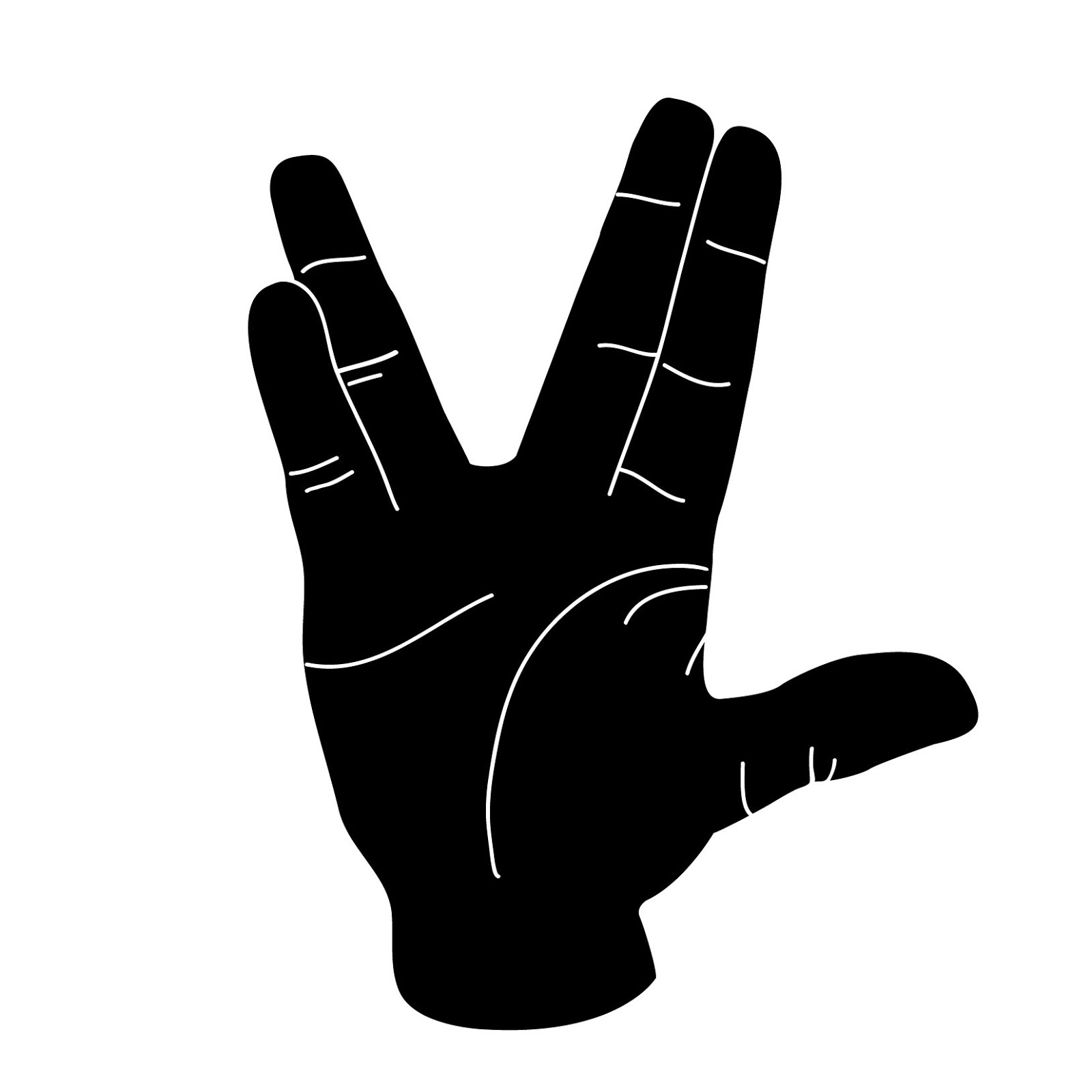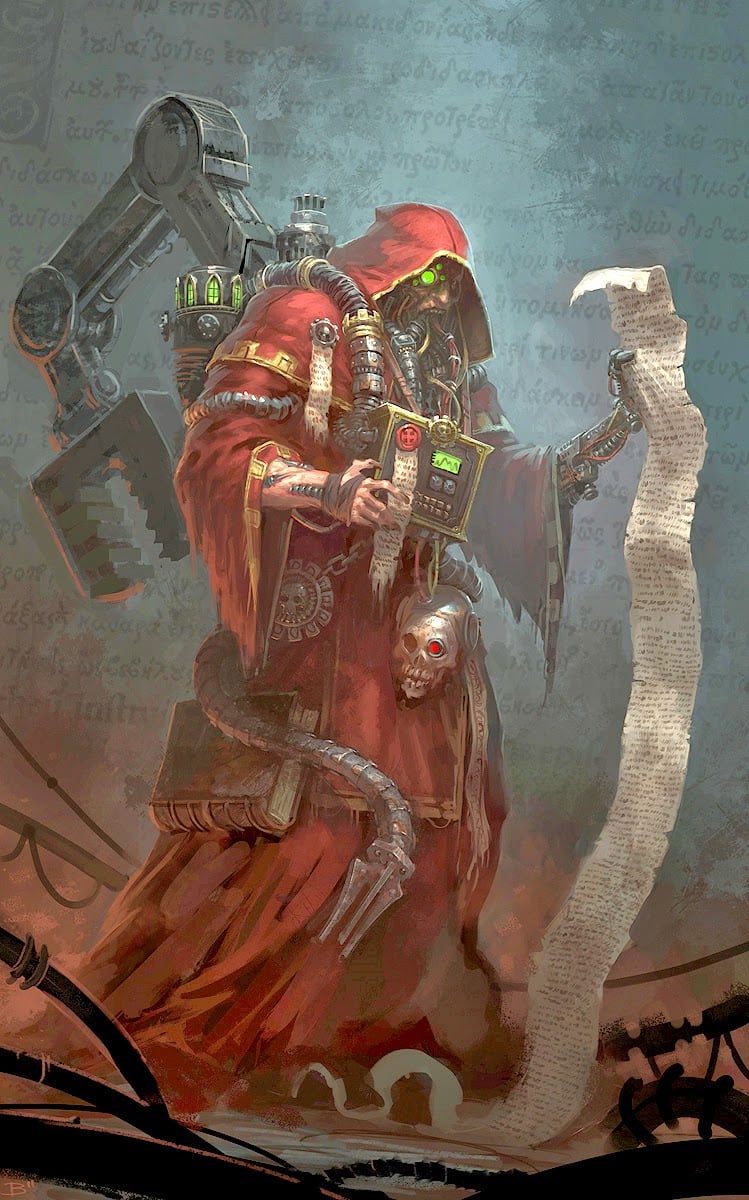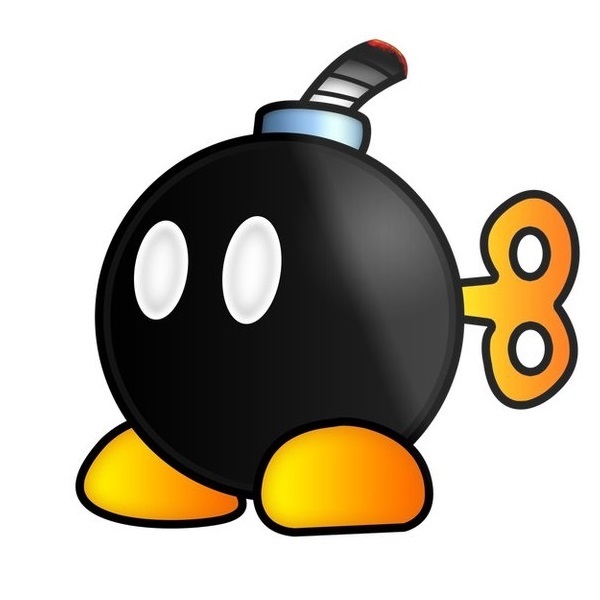- cross-posted to:
- [email protected]
- cross-posted to:
- [email protected]
What’s going on in Denmark?
It’s base 20 like in France, plus the quirk that we have an ordinal numeral way of saying half integers, i.e. 1.5 is “half second”, 2.5 is “half third”, 4.5 is “half fifth”. So 92 is said as “two and half fifth times twenty”. We’ve since made the “times twenty” implicit for maximum confusion, so it’s just said as “two and half fifths”.
Also, the ordinal numeral system for halves is only really used for 1.5 these days, so the numbers don’t really make sense to anyone. When speaking to other Scandinavians, we often just say “nine ten two”.
Why don’t we just change it to the more sensible system then? Because language is stubborn.
Now imagine moving there as a foreigner from a normal country and someone telling you their phone number! It’s like having a micro stroke.

When you need a math degree for basic communication
🤣🤣
1.5 is “half second”, 2.5 is “half third”, 4.5 is “half fifth”
Interesting.
Regionally, someGermans measure time like this, i.e. “half two” is 01:30 resp. 13:30. (Which is different from English, where people who say “half two” mean “half past two”.)We’ve since made the “times twenty” implicit for maximum confusion, so it’s just said as “two and half fifths”.
I know very little about Danish, but I learned that Danes slur the middle of most words. So I suspect you actually pronounce even less of the word than you’d write…?
Because language is stubborn.
Belgian French gives me hope.
–
[Edited: Usage is not regional]
Regionally, some Germans measure time like this, i.e. “half two” is 01:30 resp. 13:30.
This isn’t regional nor “some”, I never met a German wo doesn’t. Sure, there is “13 o’clock 30” and both are valid but I’d say the default is still the half system.
When it comes to quarters, there are regional differences and it’s a common “ice breaker” or small talk topic when people from all over Germany come together.
I am dumb. I confused this with dreiviertel vs. Viertel vor.
Even then there’s a pretty clear difference.
Good comparison here https://www.giga.de/ratgeber/specials/dreiviertel-10-viertel-12-wie-spaet-ist-es-wirklich/
It’s pronounced “toh-år-hal-fems”.
That’s 3 syllables, because the first two are glissando, but even the most rural person needs some consonants between the rest to make any sense.
When we say “half two” we also mean 13:30. It’s a pain when in Britain.
And yeah, I guess in pronouncing you’d say 92 as “to’å’l’fems” rather than “to-og-halv-fems”.
deleted by creator
I’ve run into Americans for whom “half two” means 13:30. I like it but it confuses everyone.
So the Danish can do this bullshit with everyday numbers and it’s cool because language , but I mention that it’s 70 degrees outside and everyone starts arguing about metric?
Everything is arbitrary, I’m gonna go build a dresser in multiples of rabbit foot while you all figure something out.
Danish people are environmentally damaged by the flatness of their country and the rest of Scandinavia pitty them. We will take care of this. We will teach them how to speak. Soonish.
Temperature in fahrenheit is just as arbitrary as celsius. Fahrenheit makes sense from the perspective of human experience while celsius is very relevant to water. It’s really handy if you live in a area with snowy winters. Celsius is standard all around the world, while Fahrenheit is used in a handful of places.
When we talk with other people in fx English we use their numbering system, and not our own
And to confuse even further, the cardinal number (ninety-two) is “to-og-halv-fems” in Danish without the *20. But if you need the ordinal number (92nd), then we add in the x20 as in “to-og-halv-fem-sinds-tyvende”. Danish is very easy and transparent 😊
And yall give us shit about using imperial measurements
For what it’s worth, the US doesn’t use imperial anymore. It’s “US Customary Units”. It’s mostly a mix of metric and units based on metric. The US uses volts, amps, watts, and seconds which are metric. The inch, by definition, is 25.4mm. I’m not sure how the US gallon (less volume than the Imperial gallon) is defined. Food content is given in calories and grams.
I’m also not sure how temperature is defined. Originally, temperature units were set so that fresh water boiled exactly 180 degrees above it’s freezing temperature. To avoid negative numbers, zero Fahrenheit was set to the freezing temperature of sea ice.
deleted by creator
I like our weird numbers tho 🥰
They’re lovely, aren’t they?😀
I have to admit, as a French myself I found relief in that discovery. And thank you very much for the explanation.
I was confused by the “2 and” at first, then I realize you put the smallest part of the whole number first. It makes perfectly sense if you count in base 20.
We also have an habit to count in base 12 and half 12 in France. Like “half a dozen” (6) or “one dozen and half” (18), but only for multiple of 6.
I will now say “quatre vingtaine et demie” instead of “quatre-vingt-dix” just to tease my fellow Belgians (who say “nonante” and “septante” instead of “soixante-dix” et “quatre-vingt-dix”)
EDIT: As a matter of fact, I will rather say “trois et demi-cinquième vingt” for 73 because it sounds better. Now I see it.
If I am correct, the 3rd 20 is everything between 60 and 79. The half-3rd 20 is everything between 70 and 79. So 7 and half-2nd 20 would be 37?
How would you say 40, 60 and 80 then ? 2nd 20, 3rd 20 and 4th 20?
The weird numbers only start at 50.
60: tre sinde tyve ( three times twenty).
80: fire sinde tyve ( four times twenty)
30 (tredive) you cited seems to be the exception, as it’s not “halbtots” or something.
Indeed, fyrre (40) is also clearly related to four (or fourth), it only kicks in at 50.
You can recognize the numbers where this system is in place by the ‘s’ at the end, which is a remnant of the “-sindstyve” ending meaning “times twenty”.
If it worked for 30 and 40 they would be “halvandens” and “andens”.
I’ve always found the Danish numbers intriguing. I understand the whole “halvfem-sinds-tyve”- thing and the other ones of similar origin but I can’t wrap my head around “elleve” and “tolv”. Do you remember the origin of those?
It’s literally the same in English as well, eleven and twelve are clearly related.
Not really, but they’re essentially the same as the German “elf” and “zwölf”, so we probably got them from the same place as them ;)
Wiktionary suggests the common proto-Germanic root of eleven/twelve, elf/zwölf are likely to have been “ainalif” and “twalif” - “one left over” and “two left over”.
You can thank Proto-Germanic for that.
# 🇩🇰 1 en 2 to 3 tre 4 fire 5 fem 6 seks 7 syv 8 otte 9 ni 10 ti 11 elleve 12 tolv 13 tretten 14 fjorten 15 femten 16 seksten 17 sytten 18 atten 19 nitten 20 tyve 21 enogtyve 22 toogtyve 30 tredive 40 fyrre 50 halvtreds 60 tres (threes) 70 halvfjerds (½fourths) 80 firs (fours) 90 halvfems (½fifths) 92 tooghalvfems (twoand½fifths) 100 hundred In Czech, we say „čtvrt na osm“ (quarter to eight), „půl osmé“ (half of eighth) and „tři čtvrtě na osm“ (¾ to eight) to mean
19:15,19:30and19:45, respectively, so I kinda get it.
Similarly, in German, 🕢=„halb acht“.TIL that it not French with the weirdest way to count. I still don’t really get the Danish way. Even with your explanation.
It’s not really an explanation, just a table where I leave the linguistically inclined to figure it out. The point is, the “s” at the end is short for “×20” and “half fifth” is short for ●●●●◖ = 4½ (four and half of the fifth).
Thanks. Do you know the history of that?
Maybe the Danish don’t just count with their fingers to 10, but include their toes… So 10 fingers + 10 toes = 20?
"Four score and seven years ago" from the Gettysburg Address… Many languages have or had words for counting in 20’s. They’ve just mostly gone out of fashion.
Funny enough, I grew up saying “quarter of eight” to mean 19:45. It took until my mid-20s to realize its probably a regional thing because, after I left Philadelphia (my home city) and moved to Chicago, everyone thought I meant 20:15.
Oh! In New England “quarter of” is 15 minutes before the hour (19:45) and “quarter after” is 15 minutes after the hour (20:15). That might explain why my colleagues in Alabama were surprised when I left a meeting at 9:45 when I had clearly warned them I had a hard stop at quarter of ten!
Interesting distinction none of us picked up on!
Mmm, American using 24h time. I know nothing else about you but this gets you +0.5 on an attractiveness scale.
We also do this in germany
Ja, ich spreche auch ziemlich gut Deutsch. Ich würde aber lieber die Angelsächser mit meiner Fähigkeit „čtvrt“ (tschtwrt) zu aussprechen beeindrucken.
Username checks ou… oh sorry, I forgot where I am, for a moment.
*czechs
Yeah, this is why I chose it – it represents me well. And not only is feddit.de the fastest Lemmy server for me, I spend lots of time with the Germans because Czechs are fine with Reddit and czech-lemmy.eu is empty.
Now I followed your link and was overwhelmed by my intuitive understanding of the subtleties of the Czech language … even better than reading Dutch … until I noticed the “translate” in the URL :'-(.
Haha sehr gut ;)
Thats pretty common in terms of time. I’m not going to say something is “half five” to say it coststwo and a half dollars though. I understand that with French and Danish you arent actually doing the math and just think of that string the same way i think of “ninety two” but it’s still difficult to wrap my head around.
Just to make something clear, in this system, which isn’t really used, half five would be 4.5, not 2.5.
We play on Hardcore mode.
You better have your operations in order!
Crack.

Also: the green (at least with English) should be (9 × 10) + 2
English is 90 + 2. Ninety is its own distinct word.
French is similar to English (base ten) but after 60 it gets weird and then at 80 switches to base 20 until 99.
70 in French is 60 + 10 80 and above in French is 4 × 20 + what ever number is needed to get there.
So to say 102 in French, you’d say four-times-twenty-plus-twenty-two.
I don’t believe you.
EDIT: What in the actual fuck. You were right. 😳
No. 102 in French is “cent deux”.
102 is “hundred-two” so it’s only weird for 70 “sixty-ten”, 80 “four-twenty” and 90 “four-twenty-ten”…
But the way I learned it each was like it’s own word, even if it’s not. Just don’t think about it too much!
Why don’t they have separate words for seventy, eighty and ninety?
They do, but they’re only used in some regions. Septante, huitante, nonante.
Why are they only used in some regions? Is it like a French redneck thing or a French poncy thing or…?
I honestly don’t know the history. I just know that Belgian French uses septante and nonante, Swiss French uses huitante as well. I think it’s more comparable to the vocabulary differences between for example American and British English.
In Belgium, it’s Septante, Huitante, and Nonante.
Nonante, not neuvante but yes. In Switzerland and Québec too if I’m not mistaken.
In Quebec it’s: 60: 60, 70: 60 10, 71: 60 11, 77: 60 10 7, 78: 60 10 8, 79: 60 10 9, 80: 4 20 (hehe), 81: 4 20 1, 90: 4 20 10, 97: 4 20 10 7, 98: 4 20 10 8, 99: 4 20 10 9
Don’t you dish French in Quebec?
Ah comme en France alors !
I believe in québécois French they use octante instead of huitante
no, we say soixante, soixante-dix, quatre-vingt, quatre-vingt dix in Quebec :P
Ah my mistake, I thought you guys were sensible :P
No, we use quatre-vignt dix (4x20+10), just like the French. If anyone is using octante or huitante, it is not common parlance to say the least.
You mean quatre-vingt, not quatre-vingt-dix right?
Nobody says huitante in Belgium.
It’s 60, 70, 4*20, 90.
edit: Downvote all you want. If you say huitante in Belgium, everyone will know you’re not from Belgium.
Belgians say Soixante, Septante, Quatre-vingt, Nonante. Even in the dutch language part, that’s how they learn french.
If you say Soixante-dix or Quatre-vingt-dix, everyone will know you’re french and not Belgian. Pretty simple…
Interesting, I always thought huitante was common place there, thanks for correcting me
In spanish is also 90 + 2
Seriously, french counting from 20 to 99 is fucked up seven ways sideways… what were they thinking
nine ten? (nineteen ;) )
I love this topic, keep the comments going! It gets even wilder/weirder when reading historical German monastary documents from the early modern period that sometimes mixed German numerical grammar with latin letters and abbreviations. For example this was a common way to write prices in the early 17th century in my region of study:
xiv C Lviұ f xxv bb iy d
All of this was in early modern German Kurrent (old cursive), of course, and with not always obvious whitespaces inbetween. The letters v and x looked somewhat similar, too, and you better don’t miss the small strikethroughs anywhere in the lower or upper end of a letter which indicated “minus half” (except for the letter capital C which always has it). This is the kind of fun that brings me joy during my day while simultaneously providing the content for nightmares at night.
For some closure:
The short example would read as: (10+(5-1))*100 + 50+((5+3)-0.5) florin, 10+10+5 batzen, and 1+1+1 denari.
And that would translate to a price of 1457 ½ florin (guilders), 25 batzen (silver coin) and 3 denari (pennies).Am I correct in thinking that this would be a relatively enormous amount of money for a normal person in that time?
Yes, absolutely! My work is related to monasteries. Some of these institutions were large economical organisations with hundreds or thousands of affiliated workers (in addition to the few dozens of actual clergy) stretching hundreds of villages/cities. Monastaries basically were the major corporations of the time. They did handle these amounts of money regularly.
Historical purchasing power for anything before the industrial revolution is hard to approximate. On the one hand because wages were not only payed in money, on the other hand because labor was very cheap and material cost was high - the inverse of today. To illustrate: They did lots of recycling work that would seem fanatical to us today, e.g. straightening old nails, reusing stones and wood from deconstructions, or even excavating and resharpening rotten fenceposts. To add some general and very rough perspective: An unskilled worker/day-worker could expect a yearly wage in the order of magnitude of about 5 fl (guilders) per year for very hard work and long working hours for 6 or 7 days a week (payed daily in non-face-value coins like pennies). However, it was common for wages to include living accomodation and/or food staples (that included wine or beer) - or pay out the worth of these things, separately. A pair of shoes was a valued gift one could give to an unskilled worker on special occasions.
It was a different time with different societal and economical systems in place. Estimated simplifications you might read online (e.g. 1 fl = 50€) are therefor to be taken with a buttload of salt - to the point one might call it a misrepresentation. Then there were the multiple events with increased silver and gold imports from the new world (combined with some greedy/desperate lords reducing the silver share of their coins). This led to multiple changes in the exchange rates between various regional gold, silver and non-face-value coins of the same names, complicating thing even more.
To solve these issues, the prices I named above would be in fictional coins of account, not actual physical coins that were payed. People had to do quite some math when doing accounting - and yes, minor errors happened all the time.
This sounds fascinating. I was always fascinated how complicated life could be in days past. Like how we take decimalization for granted today or the cheap conversion of money and the enormous availability of modern currency (i.e. Paper money and coins).
I once read about coin shortages and how that could impact an entire region. Fascinating stuff.
Do you happen to have book recommendations on the topic of coins or economic history of Europe (or even more specifically the German speaking area)?
If you happen to speak German I’d recommend “Das Geld der Deutschen” by Bernd Sprenger for an overview as he touches a lot of eras and different subtopics, starting from antiquity and ending with the Euro. Alternatively, “Kleine Geschichte des Geldes” by Michael North is another popular (and a little newer) survey book that I enjoyed. The most insightful parts for me were the in-depth explanations of the concept of bill of exchanges and cashless payments in general during the early modern period.
Since my focus is on monastaries and money is only one aspect, I did not research this sub topic comprehensively, even if it interests me personally - hence I conveniently didn’t search much further than mostly German literature. I just checked: The only “English book” on the topic from my bibliography is the conference proceedings “Münzprägung, Geldumlauf und Wechselkurse” / “Minting, Monetary Circulation and Exchange Rates” (Trier Historische Forschungen, volume 7) from 1984. It is a little older but was still worthwhile to me, quite recently. Despite the name it only includes a few German but mostly English essays. They are not limited geographically to the German lands. As a small word of caution: Some of the essays are rather theoretical by nature, so this might not be the very best entry point if you want an overview, or you could simply skip these essays.
I do not love to recommend it here, but asking the English collegues on reddit via /r/AskHistorians might give you a much better answer if you’re looking for good entry-level English literature on the topic. They also provide a list of recommended books that features a small “Political and Economic History” section. They included a book by Joseph Gies and Frances Gies that looks quite promising (but focuses on the time 1000-1500). Other than that I cannot find anything particularly relevant in that list. Asking over there might be worthwhile, though.
I am actually German so thank you for all the recommendations! I will check out some of the books (even though I know it will take me some time to get to them. I have a rather long reading list, but I will check them out!)
It’s a pretty enormous amount of money now. I was thinking that a gold coin was 1oz which would have been an insane amount of money but some research has told me that guilder can refer to several different coins that are between .08oz and .11oz of gold mixed with other precious metals. Ignoring the other precious metals and assuming the lowest gold content 1457.5 guilders is a bit over 116 oz of gold. Gold is approx. $1900/oz so in gold alone that is over $220,000.
Man and here I thought the English system was kinda screwy, where at first it’s in base 12 and base 20 at the same time what with having special unique names for all digits up to twelve, and then thirteen through nineteen are also uniquely weird, then at twenty we decide “man fuck that” and then it’s in base 10 until we repeat that pattern every 100, ie “one hundred seventeen.” Or then we occasionally do stupid things like “seventeen hundred” instead of “one thousand seven hundred.”
It just now hit me that “teenager” is an inherently English construct because that weird partial second decade we have. I’m curious, how does that work in languages? Like, in French they have special words up to 16 and only do “ten-seven, ten-eight, ten-nine.” You spend seven years as a teenager in England but only three in France.
Germanic languages share this. German has neun, zehn, elf, zwölf, dreizehn, vierzehn…
But continues after that. Apart from 11 and 12 the german system is consistent within itself, even if the system itself is kinda weird, English less so.
Edit: What i meant is the difference between ten/teen, whereas German uses zehn (“ten”) to build the “compount numbers”. There is also thir-teen as opposed to three-ten, which isn’t quite what eleven and twelve are, but it’s also not the same as the numbers following it. But others have pointed out that these are pretty marginal differences and i would agree.
We say dreizehn (three-ten) but dreiundzwanzig (three-and-twenty), so it’s not consistent for the same range of numbers as English. But it’s a bit more consistent because at least we don’t make up new words for 13-19 (“thir”, “teen”).
Literally every single point listed by @[email protected] applies 100% identically to German. Could you explain how English is less consistent than German?
English has four-teen fif-teen etc. up until twenty and from that point forward has the decade in front of the single number twenty-one. In contrast to German which at least Always has the single digit in front of the decade
To be fair English has a lot of German. The “teen” sound almost certainly comes from the sound “zehn”. It’s pretty easy to hear how fünfzehn und sechszehn eventually become fifteen and sixteen. We’re more or less saying five ten just kinda mushed together.
More accurately, modern English and German come from the same root. A Proto-Germanic word for 15 developed into “fünfzehn” in German and “fifteen” in English.
🤯 Didn’t notice that one! Yes, that’s indeed more irregular in English!
Literally only because of “teen/ten” difference. Everything else matches up, except that the roles of the cardinal stem (three) and the ordinal stem (thir) are swapped in 13 and 30 for German
Three, thirteen, thirty, third vs Drei, Dreizehn, Dreißig, Dritte
Used 3 as an example because it’s the most irregular out of the 9 non-zero digits in German
It’s fascinating how our number systems even evolved. They’ve done studies with remote Amazon tribespeople where they show them a number of dots and ask them how many there are, and found that their words for what we thought were their numbers 1-5 actually translate to more like 1, 2, 3, ‘4-ish’ and ‘many’. Interestingly when they’ve done the same with very young children then they’ve got similar results.
Counting is something that only took off when large-scale civilisations (and the need to pay taxes!) took off - before this there was never really a need to be specific when counting a quantity of more than about 4 or 5. Maths developed as an offshoot of language rather than something distinct and so our counting systems suffer from the quirks that come with this.
In my language(Romanian), the numbers between 11 and 19 are onetoten,(unsprezece) twototen(doisprezece) … Ninetoten(nouasprezece)
There are 3 exceptions: for 11 instead of unusprezece(onetoten) its unsprezece(un/o is used when saying that there is only one of something, but unu is used when counting), for 14 instead of patrusprezece(fourtoten) its paisprezece and instead of sasesprezece(sixtoten) its saisprezece
In Finnish, the numbers 11–19 are (the number for 1–9) + “toista”, lit. “of the second (ten)”. So 11 is yksitoista, “one of the second (ten)”. That system is only used for 11–19. Bigger than that is tens + number, e.g. 21 kaksikymmentä yksi (two tens and one).
The Finnish word for “teen” is “teini”, which is a loanword from English. The native word for a person that’s not a child nor an adult is “nuori” lit. “a young”.
Japanese is 1 (ichi), 2 (ni), …,10 (juu), 10+1 (juu-ichi), 10+2 (juu-ni), …, 21 (ni-juu-ichi)…, 92 (kyu-juu-ni)…, 100 (hyaku)
Yeah, the numbers look all nice and orderly in the abstract until you need to use them for something in the real world…
In Czech, we say náctiletý but that applies to 11 (jedenáct) through 19 (devatenáct)
then we occasionally do stupid things like “seventeen hundred” instead of “one thousand seven hundred."
Both are acceptable, though. Such-and-such hundred is just a little faster to say.
In Swedish the numbers from 13-19 work similarly. We just add “ton” instead of teen. Teenagers called tonåringar (ton-agers).
TIL a little about Swedish.
I wonder if Swedish and English number words share a history, because I can imagine it started as “three ten” which gets crunched to “thr-t’n” and then properified into “thirteen.”
They’re both Germanic languages, just like Dutch, German, Norwegian, Danish and a few others. Same origin. All of them have variations of tre/dre/drei/thir/þre/þrēo (say them with sounds halfway between t and d as the first sound, and you’ll see how similar they are) followed by variations of ten/teen/tin/tan/ton/tien/zehn as a suffix for ten (again, pick a halfway point between t and z and it’s easier to see how similar they are).
In Old English it was þrēotīene ( þ is “th”), and in Old Norse it was þrettán, same as modern Icelandic, so the first common root is even further back, but you can see the similarity. The *hypothesized proto-Germanic root is þritehun. (þriz + tehun.
But, it goes back even further than that. The Romance languages (tres, trois etc) shares the same proto-Indo-European root (hypothesized to be tréyes) for three with proto-Germanic.
The names for numbers are ancient, and though not always recognisable, sometimes recognizable variants pop up even further away than you’d expect. E.g. Pashto (Southeastern Iran) has dre for three, Sanskrit has trí, Indonesian has tri, all of them descendants of the same proto-Indo-European root.
At 40 I still get confused when people say shit like 12 - hundred and 16. I’m like… Is that 12 groups of 100? Is that a 12 with 000 after?
1 thousand, 2 hundred and 16.
But I wasn’t ever a math major or anything.
Even as I typed it, it made sense. But to throw it into a conversation. Makes me less certain.
Flight school beat “twelve hundred” out of me.
The more formal way of writing it (one thousand, two hundred and sixteen) is definitely more clear. But if it helps to remember the more colloquial way (twelve hundred): twelve hundred is a 12 followed by 2 zeros, just like one hundred is a 1 followed by 2 zeros.
In Hungary we don’t even have a separate name for 11 and 12, just 10 + 1 and 10 + 2. But at least we messed up the billions, it’s called ‘milliárd’ and the trillion is ‘billió’. We were so close to making it perfect.
*sigh* That’s normal across Europe, including the UK until recently.
https://en.wikipedia.org/wiki/Long_and_short_scales
Anyway, don’t tell me Hungarian is sensible when second (unit of time) is “másodperc”.
But at least we messed up the billions
No, you folks did it correctly. It’s everyone else who messed up: How big is a billion?
1 million squared is a billion. 1 million cubed is a trillion. (1 million)^4 is a quadrillion. And so forth with pent-, sex-, sept-, oct-, etc. Milliard, billiard, trilliard, etc. slot in between the powers of one million.
TIL, then our number system is perfect!! :D
Here is an alternative Piped link(s):
Piped is a privacy-respecting open-source alternative frontend to YouTube.
I’m open-source; check me out at GitHub.
Italy joins the club of messing up the billions 🙌
For us a billion is “un miliardo” and a trillion is “un bilione”
I think that’s fairly normal in Europe, isn’t it? In Germany we have Million, Milliarde, Billion, Billiarde instead of million, billion, trillion and so on, too.
Yea, that shit confused me so damn many times before!
I might be remembering this incorrectly, but a billion in Europe used to be a million million, and we would count in thousands of millions first, as opposed to a billion now being a thousand million.
I can’t remember whether a trillion was a million (old) billion, or whether it was a billion billion.
I think Denmark should stop doing crack.
If that’s crack I really wonder what crazy shit the US and UK take to end with the imperial system!
I’m not sure what’s more asinine, the colors chosen for this map, or the
DutchDanish.Edit: worth it for the joke
deleted by creator
Oh yeah, thanks for the correction, the joke was still worth it ;)
Guys we found Austin Powers.
Perhaps I should preface this by mentioning I’m Danish. Before clicking the link I just read “Dutch Danish” and thought “those poor, poor people”. Imagine our two languages combined.
deleted by creator
deleted by creator
But – how would you express eleventy and half a dozen then?
No, but 17, 18, and 19 should be ten-seven, ten-eight, and ten-nine.
10-4 good buddy
🇬🇧 ninety
🇫🇷 quatre-vingts-dix
🇩🇰 HALVFEMSThere’s also they way it’s said in Basque which is 4 x 20 + 12.
So exactly like French on the map ?
Yes, but in Basque.
Which is why it doesn’t make sense that it’s colored green
Basque isn’t a country is why.
It’s people that speak, not nations.
I say this, while being very conservative.
4*20+12
Four score and twelve
Quatre vingt douze
It’s a quatre vingt doozy!
That it is mon frère!
So what is going on in Walloon and Swiss French? Is it just the Parisian dialect that is messed up?
Swiss French are reasonable people, they’re using 90+2.
What’s the Swiss French word for 90?
Edit nevermind it’s further down the thread. Septante, huitante, and nonante.
Quebec is also messed up, unfortunately.
You missed the traditional Celtic systems.
Welsh should be both 9 x 10 + 2 and 2 + 10 + 4 * 20.
And Irish – I didn’t get it, they seem to have a modern 9 x 10 + 2 system, an old vigesimal and one for age?
Nobody ever remembers Welsh on these charts.
Are all German numbers like that?
No, it gets more confusing the more numbers you add. 34563 4+30 thousand +500 3+60
Ow my brain.
Also funny because I had assumed English got the numbering system from German.
You probably did, but then you did the sensible thing and (mostly) changed it around. You can read some 19th century novels and find stuff like “I am two and twenty years old”.
Mostly because it’s still the old order for the teens. 1616 could be read as sixteen hundred sixteen, right?
Hmm is that actual English usage or an author thinking in German and translating badly (there were lots of German immigrants to North America).
I don’t think e.g. Jane Austen was German.
Or Shakespeare…
Thy fifty yet doth double five and twenty.
I don’t think I’ve seen people read 1616 as sixteen hundred sixteen. You could read 1600 as sixteen hundred, but when there are numbers in the tens and ones spots I don’t see anyone using it. The whole thing using sixteen-hundred is weird to me, it’s one thousand six hundred sixteen.
I’ve heard it lots of times (sometimes just as “sixteen sixteen”) - mostly for years though.
And it seems like Wikipedia agrees:
In American usage, four-digit numbers are often named using multiples of “hundred” and combined with tens and ones: “eleven hundred three”, “twelve hundred twenty-five”, “forty-seven hundred forty-two”, or “ninety-nine hundred ninety-nine”.
you’re correct, but it may seem antiquated to some… the full “old” way to say it was 16 hundreds and 16…
when i read 1,500, it’s about 50/50 that it’s one thousand five hundred, or fifteen hundred
And that’s because the numbers we use today where originally brought to Europe by Arabs. Arabic is read right to left. So having reading numbers that way used to be the ‘correct’ way in lots of languages. German is just one of the few ones that stuck with it.
People only borrowed the symbols for numbers from Arabic, not the actual concept of numbers themselves.
I think they used to do it in English as well. For example I remember Jane Austen using both twenty-one and one-and-twenty. So I’m guessing it used to be the same as in German, then for some time you could use both and now one-and-twenty is not used anymore.
Yes, Germans say numbers like that. (It only applies to the tens tho)
Roughly translated you’d say two-and-ninety (without the minus, I just made those so it doesn’t look that cursed)
It’s mainly because at least in German it flows better than ninety two would. There have been pushes to accept ninety two as well but acceptance has been and continues to be scarce.
Man I’d love for that to catch on, mostly so it’s easier to learn. Kids get confused by the order all the time. It’s even shorter in some cases.
Also, the reverse order makes dictating phone numbers such a pain.
My kids grow up with multiple languages. I told my daughter early on not to bother with German numbers larger than 20, and to select a different language to do math in her head.
For a few years she was just saying larger German numbers like 9-2, or was writing them down, though now at 7 she seems to get better at converting them correctly.
Definitely. Up until now I always dictate phone numbers with digits as pairs: like “neun, zwei” instead of “zweiundneunzig”
(It only applies to the tens tho)
Tens, but also ten-thousands, ten-millions, ten-billions … you get the gist.
some (very few, i think it’s only the “teens”) english numbers are like that, like seventeen (7+10) for example
Kind of. Those are distinct names rather than seven+ten. It took a long time until I even made that connection that teen probably came from ten.
Yes, and it’s so annoying. I’m Austrian, a bit dyslexic, and sometime I just can’t sevenandeighty sixandseventy.
Of course, why would 92 be an exception? (Only numbers with a thousand-group ending in 21-99 do that, though)
See French going nuts for 92.
What I mean is they also follow their own weird rules, 92 uses the same system as 91 or 93.
Only 21-99, after that you say the hundred (thousand, million, etc.) first.



































